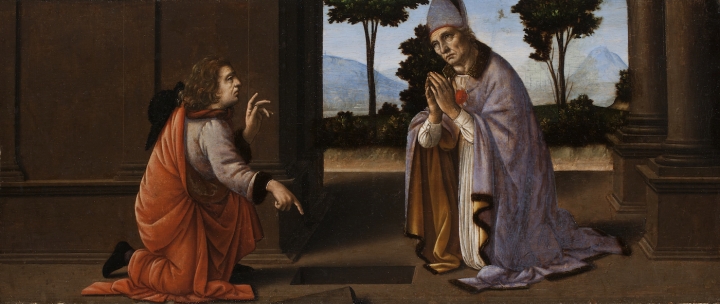 Every few years, it seems, the world is treated to a new Da Vinci attribution—that is, some Renaissance painting that held low-key status in a minor collection suddenly goes stratospheric as it is newly credited to the maestro himself, Leonardo Da Vinci.
Every few years, it seems, the world is treated to a new Da Vinci attribution—that is, some Renaissance painting that held low-key status in a minor collection suddenly goes stratospheric as it is newly credited to the maestro himself, Leonardo Da Vinci.
It’s happened again: “A Miracle of Saint Donatus of Arezzo,” a wood-panel painting and once part of an altarpiece at the Pistoia Cathedral in Tuscany, has been identified by conservators as an early apprenticeship work of a 23-year-old Leonardo. The painting is on display at the Worcester Art Museum in Massachusetts.
The museum has owned the painting since the 1930s, when it was actually tentatively attributed to Da Vinci. As the work is unsigned, and perhaps out of an abundance of caution, the museum’s catalog revised the attribution to “disputed.” Then in the 1970s, they credited the work to Florentine painter Lorenzo di Credi.
The confusion is perhaps understandable, and not only due to Leonardo’s regrettable habit of not signing his work. During his days as a student in Andrea del Verrocchio’s workshop, he contributed to numerous large-scale commissions, wherein he and other apprentices were expected to fill in scenery, background figures, etc.—this was artisanship, not necessarily artistry (or so it was seen at the time). The school itself was considered to be the creator; individual hands were irrelevant.
Posterity’s saving grace, and the reason for this new attribution, is Leonardo’s unparalleled technical mastery, which was evident in even his earliest work. We’re still uncovering the minutiae of his techniques (which helps explain the errors of attribution in previous decades), but we understand now that Leonardo’s use of perspective and vanishing points, and well-nigh microscopic details such as reflections painted onto the surface of subjects’ eyeballs, were unique enough to be signatures in of themselves. All of these are evident in the Saint Donatus painting, and although it’s more than likely that other students of the Verrocchio school contributed to the work, it’s as clear as it might be that Leonardo da Vinci was the primary artist.
All of which makes one wonder: how many more undiscovered Da Vincis still wait for us out there?
